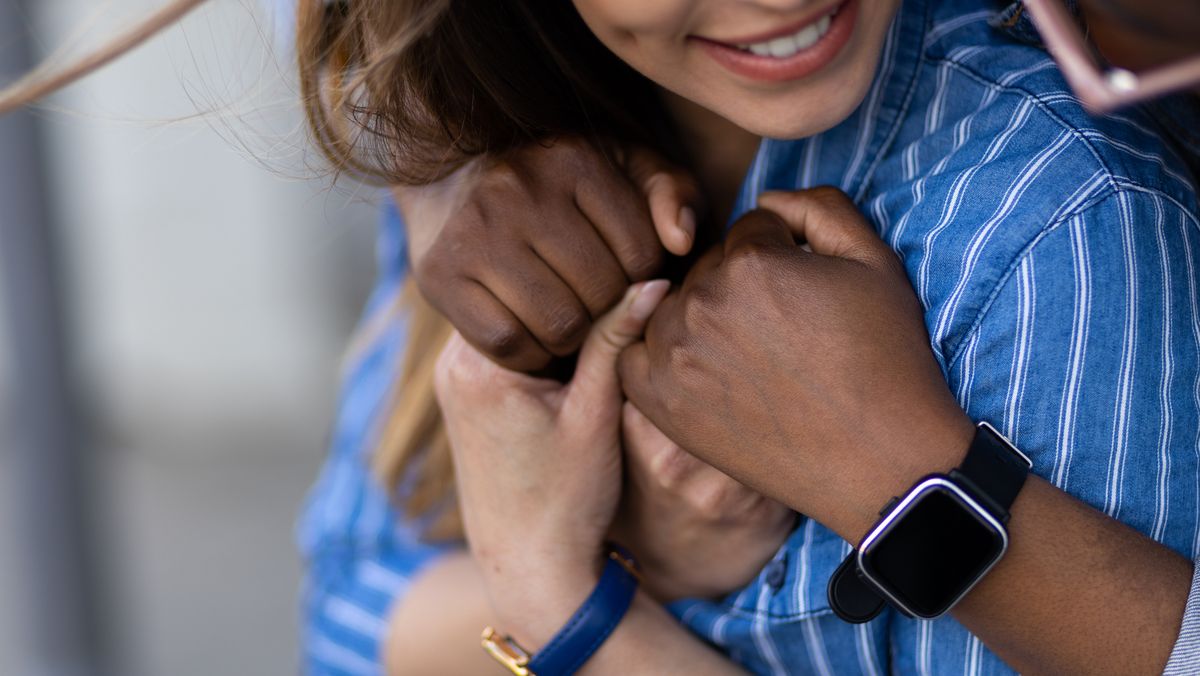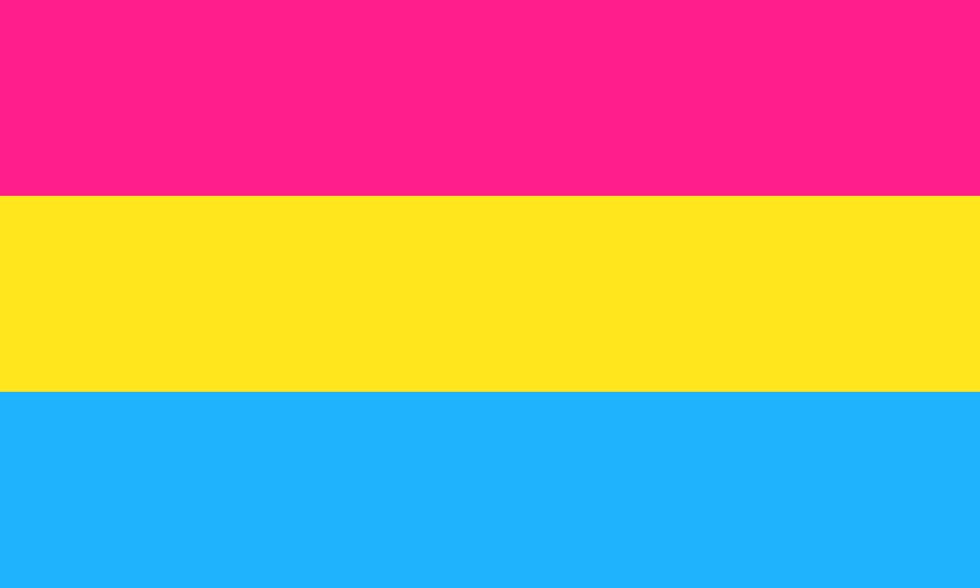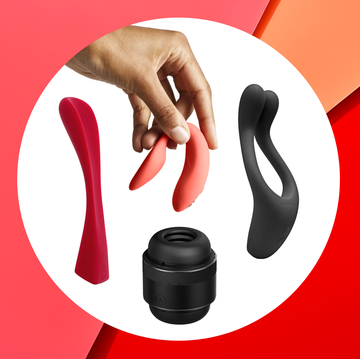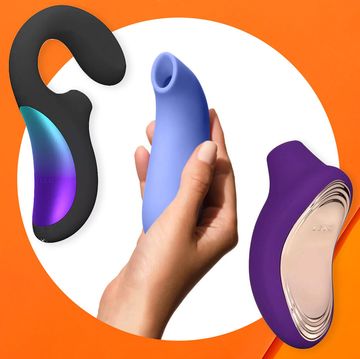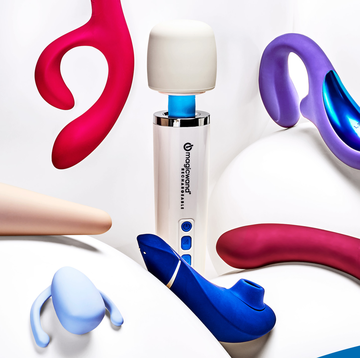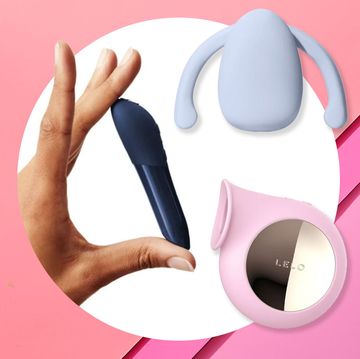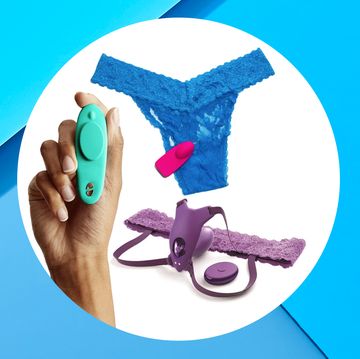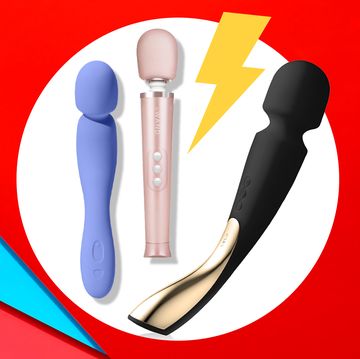There are many ways to identify one’s sexuality—and there are tons of labels that don't fit into binary categories. In recent years, celebrities such as Bella Thorne, Janelle Monae, Demi Lovato, and Miley Cyrus have come out as pansexual, meaning they experience attraction to others regardless of gender identity. Most recently, you might have come across the label on Netflix's Escaping Twin Flames, a docu-series about a controversial online community. It's crucial to note, though, that pansexuality is a very real sexual orientation—and it's nothing new.
When pansexual people make a romantic connection, it’s very much about connecting with the person—not their gender, says Holly Richmond, PhD, a certified sex therapist and marriage and family counselor and the author of Reclaiming Pleasure: A Sex-Positive Guide for Moving Past Sexual Trauma and Living a Passionate Life. "It’s about developing meaningful relationships."
Although pansexuality might sound similar to bisexuality, the two have key differences. And they're both very real, separate identities. "There are a lot of stereotypes and misconceptions about pansexuality, and one of the most prominent ones is that pansexuality doesn't exist, or isn't a 'real' sexual identity. This is absolutely false," says Corey Flanders, PhD, an associate professor of psychology and education at Mount Holyoke College.
This kind of erasure can have a deep, painful impact. If a pansexual person’s sexual identity is denied by others, it can hurt or stifle them, or even prevent them from accepting their own identity, she says.
Ahead, experts explain everything you need to know about pansexuality.
What does it mean to be pansexual?
If you are pansexual, your attraction to others is completely unrelated to gender, says Liz Powell, PhD, a sex educator and psychologist based in Philadelphia, Pennsylvania. That said, you “may or may not have certain kinds of gender performance or gender identity that you feel more attraction to,” they add.
How does pansexuality differ from bisexuality?
Bisexual is a term used to describe a person who is emotionally, romantically, or sexually attracted to more than one sex, gender, or gender identity, according to the Human Rights Campaign (HRC). “Pansexual,” on the other hand, is used to describe a person who can be emotionally, romantically, or sexually attracted to people of any gender.
“'Pan' comes for the Greek word 'all,'” says Richmond. That means a pansexual person could be attracted to men, women, non-binary people, or people who choose not to identify with any gender.
Like Miley and Janelle, some people identify as bisexual, and then later decide that the pansexual label fits better. "Bisexuality as a term has experienced criticism for adhering to a binary system of gender, a.k.a. 'I'm attracted to men and women,' even though this strict definition of bisexuality doesn't fit many bisexual-identified folks," says Rae McDaniel, LCPC, CST, who has a master's degree in counseling with a specialty in gender and sexual identity and serves patients in Chicago, Illinois.
Powell seconds this, adding that even in queer communities, bisexual people are sometimes perceived as less “enlightened” than pansexual folks. But this belief is actually harmful to bi folks, they say.
Ultimately, there are a lot of similarities between bisexuality and pansexuality, and it's important to note that people who identify with both labels can feel attraction to people of all genders. It all comes down to whichever word feels the most accurate to your experience.
How can you tell if you’re pansexual?
Pansexuality falls under the umbrella of polysexuality, Powell explains. If you’re attracted to more than one gender, you might fall somewhere under the polysexual umbrella.
Bisexuality and pansexuality do have a lot of overlap, so it’s okay to try out different labels until you figure out the best one for you. “It tends to be more about which terms feel more aligned for you either because of the groups that are using them or the way that you understand those terms or what feels like a better fit for you,” says Powell.
What's it like to date as a pansexual person?
It’s different for everyone, says Powell. But one important thing to remember is that having a straight cis partner doesn’t make you any less pansexual.
“A lot of people who are pansexual often worry that if they have a partner who is of a gender different than theirs, that that makes them no longer queer or not queer enough, and that's definitely not true,” Powell says.
Also, make sure your partner(s) respects your identity. “If there's someone you're dating, who wants to round you down to either straight or gay to make them more comfortable, that's not a person for you,” they add.
Is pansexuality a common sexual identity?
Bisexuality and pansexuality are the most common queer sexualities, according to Powell. “The estimate is that about half of all LGBTQ folks are bi or pan,” they say. “Most people who are bi or pan tend to find themselves kind of forced into an ‘either/or’ binary by straight and queer populations.” There can be stigmatization in the LGBTQ community in this way.
But overall, Richmond estimates that less than one percent of the population identifies as pansexual. Because pansexuality is a fairly new concept to many people, it’s hard to pinpoint exactly how many identify with the label, Richmond explains. But as more people become aware of pansexuality, there may be more people who come to identify that way, she says.
What is the pansexual pride flag?
The pansexual pride flag has magenta, yellow, and cyan stripes.
How can you support someone who is pansexual and the overall pansexual community?
Powell suggests to begin by unlearning your own binary thinking.
“A lot of the hate that pan and bi people get is from people who have not worked to undo their assumption that everyone is an ‘either/or’ when those of us who are bi and pan are ‘and,’” they explain. “They are one of the least supported and most targeted minorities, so the more that you try to bring your binary thinking to negate their identity, the worse it's gonna be for them.”
Of course, unlearning a lifetime's worth of binary messaging isn't an easy or quick task. To further your self-education into pansexuality, Powell suggests reading Life Isn't Binary: On Being Both, Beyond, and In-Between by Meg-John Barker and Alex Iantaffi, and/or How to Understand Your Sexuality by the same author duo.
Meet the Experts:
Holly Richmond, PhD, is a certified sex therapist, marriage and family counselor, and the author of Reclaiming Pleasure: A Sex-Positive Guide for Moving Past Sexual Trauma and Living a Passionate Life. Corey Flanders, PhD, is an associate professor of psychology and education at Mount Holyoke College. Liz Powell, PhD, is a sex educator and psychologist based in Philadelphia, Pennsylvania. Rae McDaniel, LCPC, CST, has a master's degree in counseling with a specialty in gender and sexual identity and serves patients in Chicago, Illinois.
Addison Aloian (she/her) is the assistant love & life editor at Women’s Health. Outside of topics related to lifestyle, relationships, and dating, she also loves covering fitness and style. In her free time, she enjoys lifting weights at the gym, reading mystery and romance novels, watching (and critiquing!) the latest movies that have garnered Oscars buzz, and wandering around the West Village in New York City. In addition to Women's Health, her work has also appeared in Allure, StyleCaster, L'Officiel USA, V Magazine, VMAN, and more.
